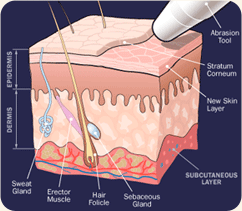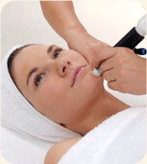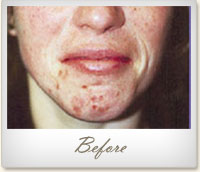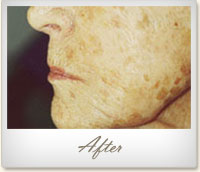|
Microdermabrasion
 Overview
Good skin starts at the cellular level, and Microdermabrasion is one of the most popular, time-proven methods of consistent skin care. It can dramatically improve skin tone and texture even after just one treatment. Microdermabrasion is used to treat a variety of skin conditions, which include, but are certainly not limited to:
For those struggling with mild to moderate acne, Microdermabrasion can serve as a worthwhile monthly preventative treatment. If you're noticing premature signs of aging such as skin discoloration and sun damage, Microdermabrasion is a preferred way to gently buff away dry, damaged skin. Even if you feel happy with the condition of your skin but are looking for a "refresher," Microdermabrasion offers the rejuvenating benefits of a facial, with the renewing qualities of a deep facial scrub.
 How Microdermabrasion Works
Also known as the "power peel," Microdermabrasion is one of the most effective, low-risk ways to maintain healthy skin with a fresh, youthful-looking glow.
A Microdermabrasion treatment involves a "microderm machine" that emits a pressurized stream of crystals on the skin's surface. It is designed to gently slough off dead skin, eliminate blackheads, shrink large pores, and leave skin feeling soft and smooth. It works on all skin types, especially for those sensitive to chemical procedures. As an acne treatment, Microdermabrasion is successful because of how well it unclogs the pores. When pores are relieved from dirt, oil, and dead skin, acne can heal more quickly. In addition, when dead skin cells are wiped away, acne-causing bacteria cannot survive as easily. What to Expect
Microdermabrasion treatments last for about 30–45 minutes, with no anesthetic required. The number of treatments required is based on the severity of the skin condition. For optimal results, anywhere from 5–12 treatments can be recommended, spaced from 2–3 weeks apart. Maintenance of results requires periodic repeat treatments after the initial regimen is completed.
 You should not feel any pain or discomfort during your Microdermabrasion treatment. There is also no recovery time from Microdermabrasion; you can expect to resume normal activities following treatment. Microdermabrasion is a great procedure to undergo during your lunch hour. Effectiveness and Results
The duration of Microdermabrasion results should be fairly long-lasting. However, it depends on the severity of the skin damage and the number of treatments received. While you may initially need up to two treatments per month, many patients, with time, require only one treatment a month as a part of a skin care routine.
While everyone's situation is unique, most people notice considerable changes in the skin's tone and texture after after one treatment, and a noticeable reduction in skin imperfections in as little as two treatments. Possible Side Effects
There are virtually no side effects with Microdermabrasion. The risk associated with Microdermabrasion is small because it is a very gentle procedure, only removing the top layer of skin (dead skin cells) and leaving the live tissue underneath intact. You can expect a slight dryness and flaking for a few days after treatment. If you have extra sensitive skin, we suggest using some soothing moisturizers after treatment to make sure your skin is properly hydrated.
However, teenagers and women who are nursing or pregnant are advised against having this procedure done because their hormones may inhibit or alter the effects of Microdermasabrasion. Before and After Gallery

 
 | |||